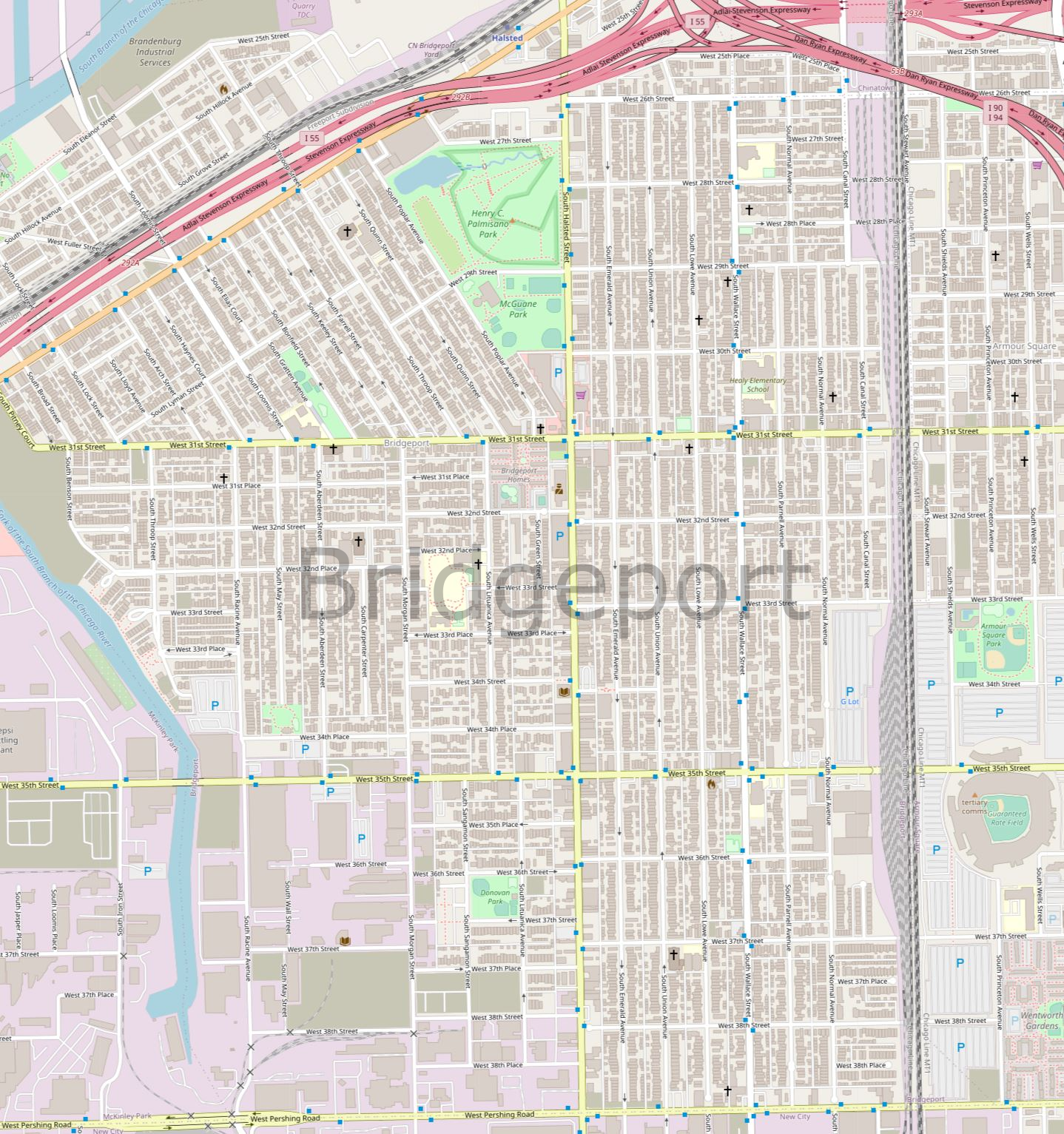


Bridgeport has grown up as a working class, mostly Irish neighborhood southwest of the loop. Originally established just outside the city as Hardscrabble, mainly for workers of the Illinois and Michigan canal, it very quickly became an Irish American enclave as they provide cheap and efficient labor to construct the canal. The original neighborhood was based north of 31st, but has since extended south to Pershing Rd. The city was also settled by Anglo-Italians and Lithuanians, and has since become one of Chicago’s diverse areas, with large Hispanic, Asian and Anglo-European populations.
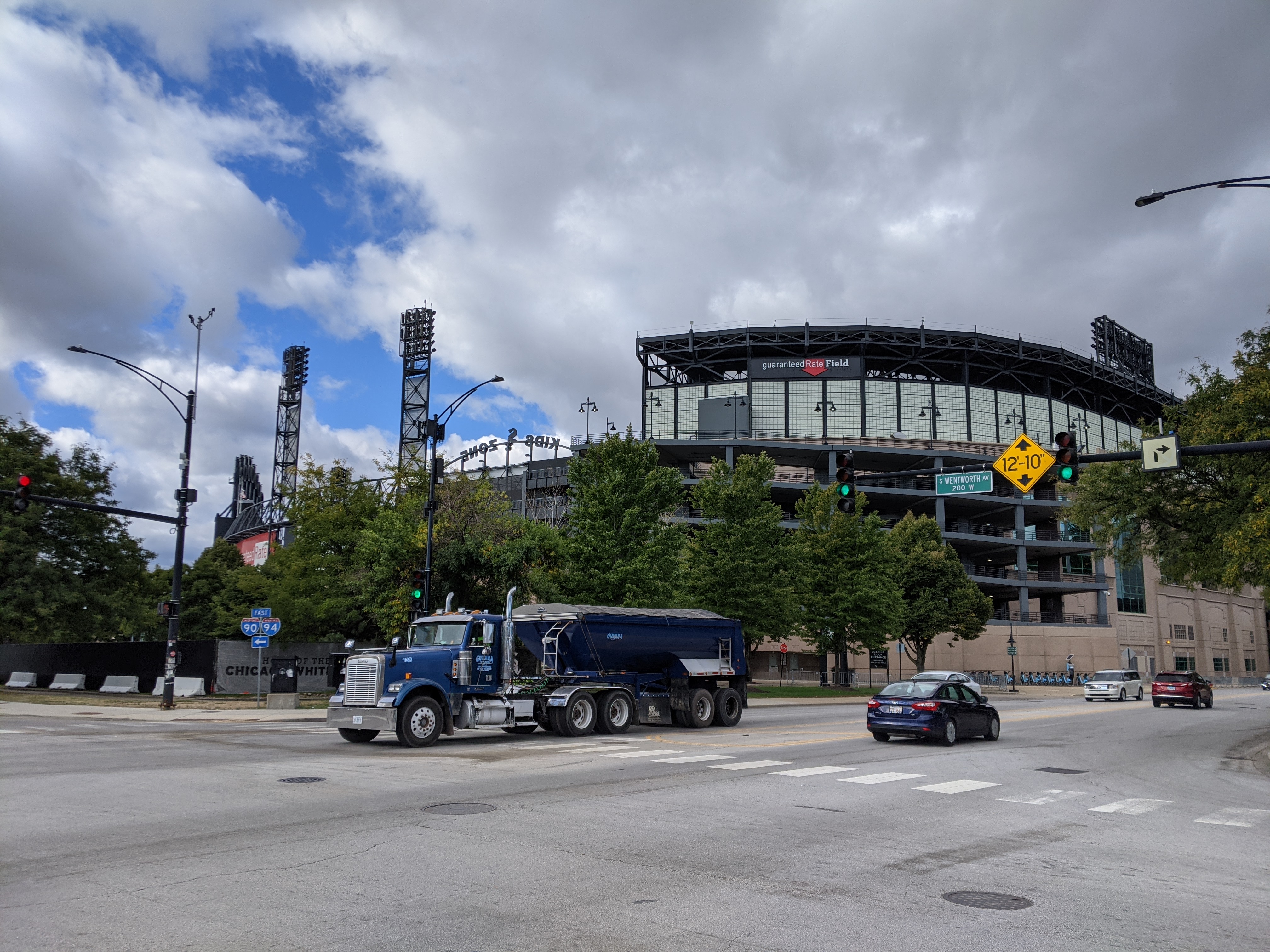
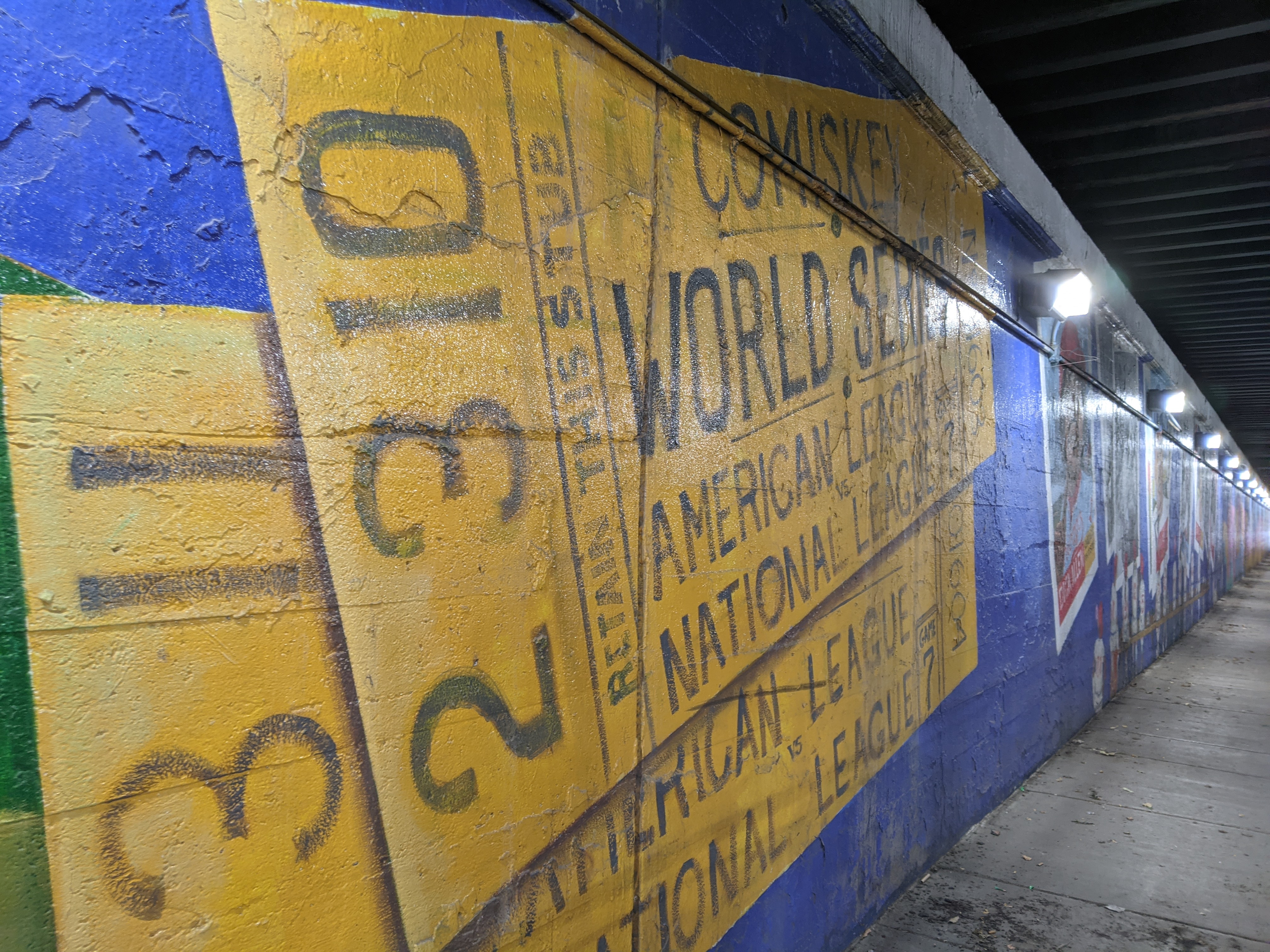
We started our journey off through Bridgeport at 35th and Wentworth – the White Sox ‘Guaranteed Rate Field’. Built in 1989-19901, the facility is still in use (albeit currently without a crowd due to ongoing coronavirus). The field originally called Comiskey Park after the first home of the White Sox, which was located just across the road and where the White Sox had played for 80 seasons – the cornerstone was laid on St Patrick’s day, 19101. The field can hold over 40000 1 fans at peak, and notable baseball players to have used the stadium include Frank Thomas, Mark Buehrle and José Abreu2. Lesser known, however, is the fact that underneath the neighboring Union Pacific tracks lies 2 huge murals, depicting some of baseball’s most famous moments. Named ‘The Dream’, these murals were designed and painted by Cyd Smillie with help from many other community members and, in my opinion, adds character to the otherwise bland tunnel.
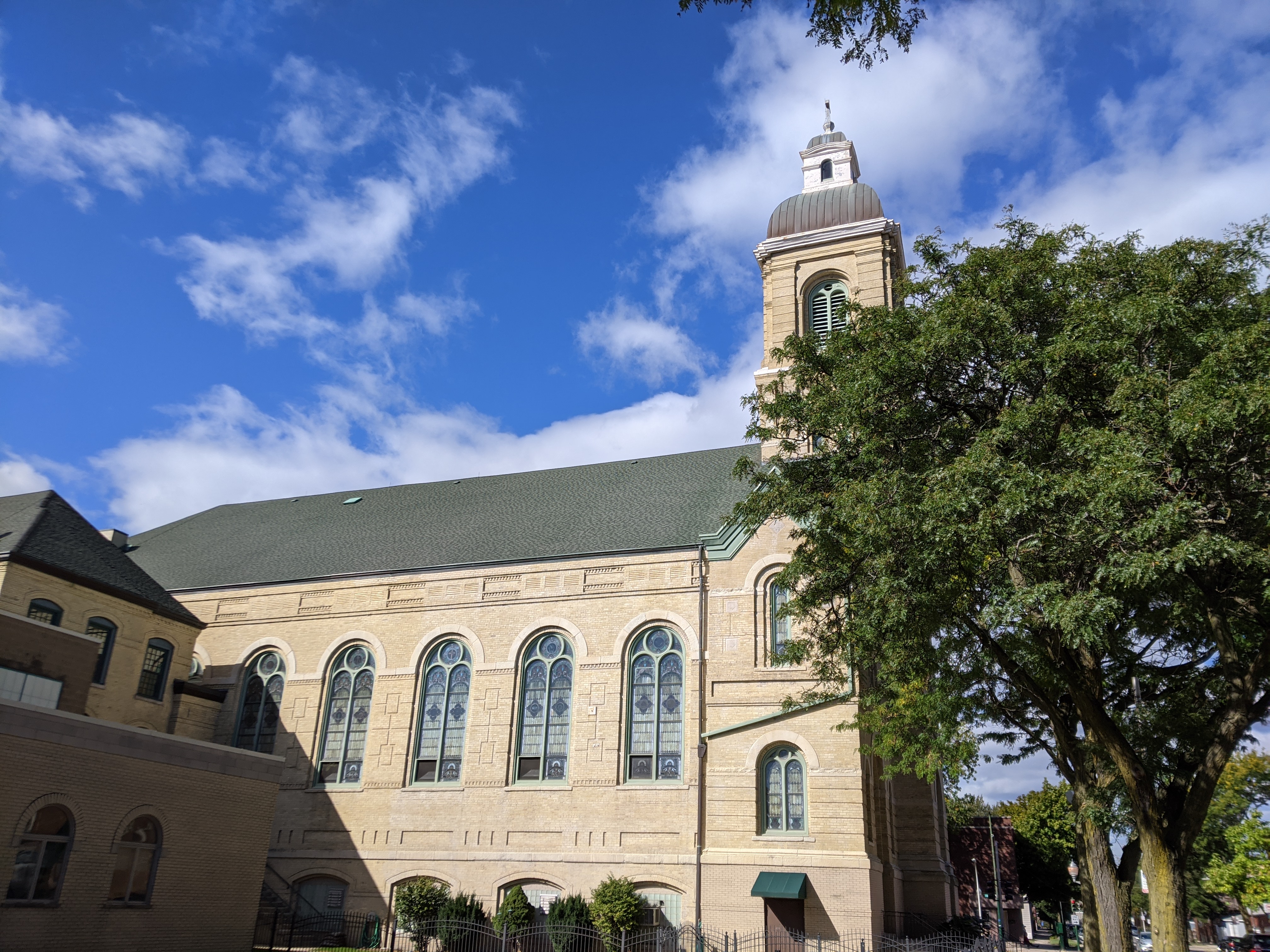
After visiting the baseball field, we headed southwest to 37th, and the Nativity of Our Lord Catholic Church. Founded in 18683 at a time when the city’s Irish population was skyrocketing, the church is one of the oldest churches in the City of Chicago. The church was built to serve the new Irish Catholic population that was working in the nearby Union Stockyards. The church itself was designed by Irish-American architect Patrick C. Keeley, a renowned architect credited with designing every 19th century Catholic cathedral in New England4. The church underwent a small restoration project in 2010-2011 thanks to the community, bringing it to what it is today. The church is most famous for being the church of the Daley family, including Richard J. Daley, Richard M. Daley, William M. Daley (Obama’s chief of staff) and the current Cook County commissioner John P. Daley.
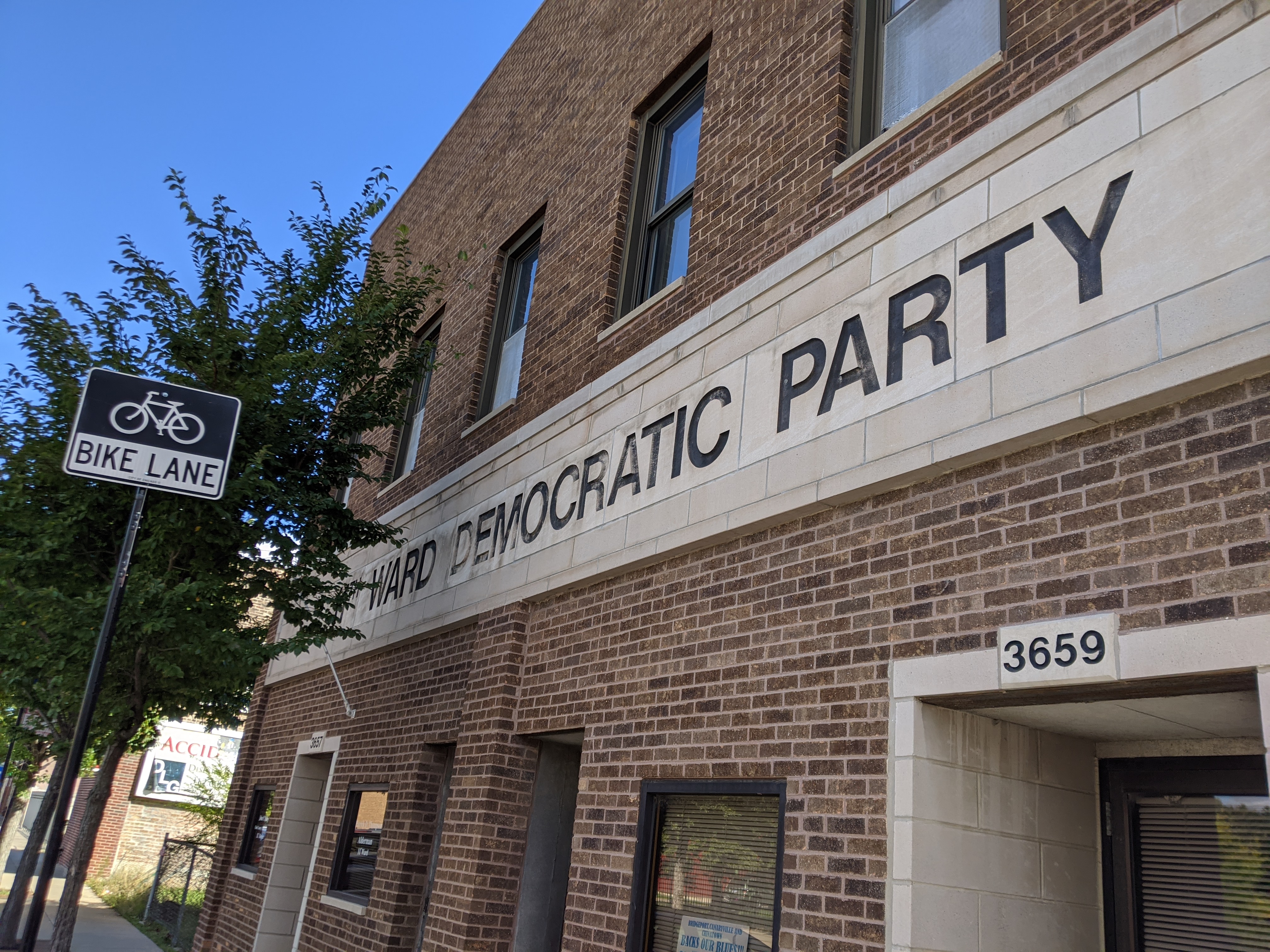

From the Daley’s church, we move on to the Daley’s political stronghold – the 11th ward Democratic party’s office on Halsted. Home to the current Alderman Patrick Daley Thompson and committeeman John Daley5, this building has been the office of 2 of Chicago’s longest serving and arguably most successful mayors, Richard M Daley and Richard J Daley. They gave the city lasting legacies including Millennium Park and contributing to the city through investment in assets like O’Hare airport and McCormick place, leading to success when other rust belt cities fell into decline6,7. Not without there shortfalls, particularly in police brutality and selling off city assets, they still contributed a lot to the city’s current success, and are proof of the ever presence and significance of Chicago’s Irish population in city politics – the neighborhood has been home to 5 city mayors.
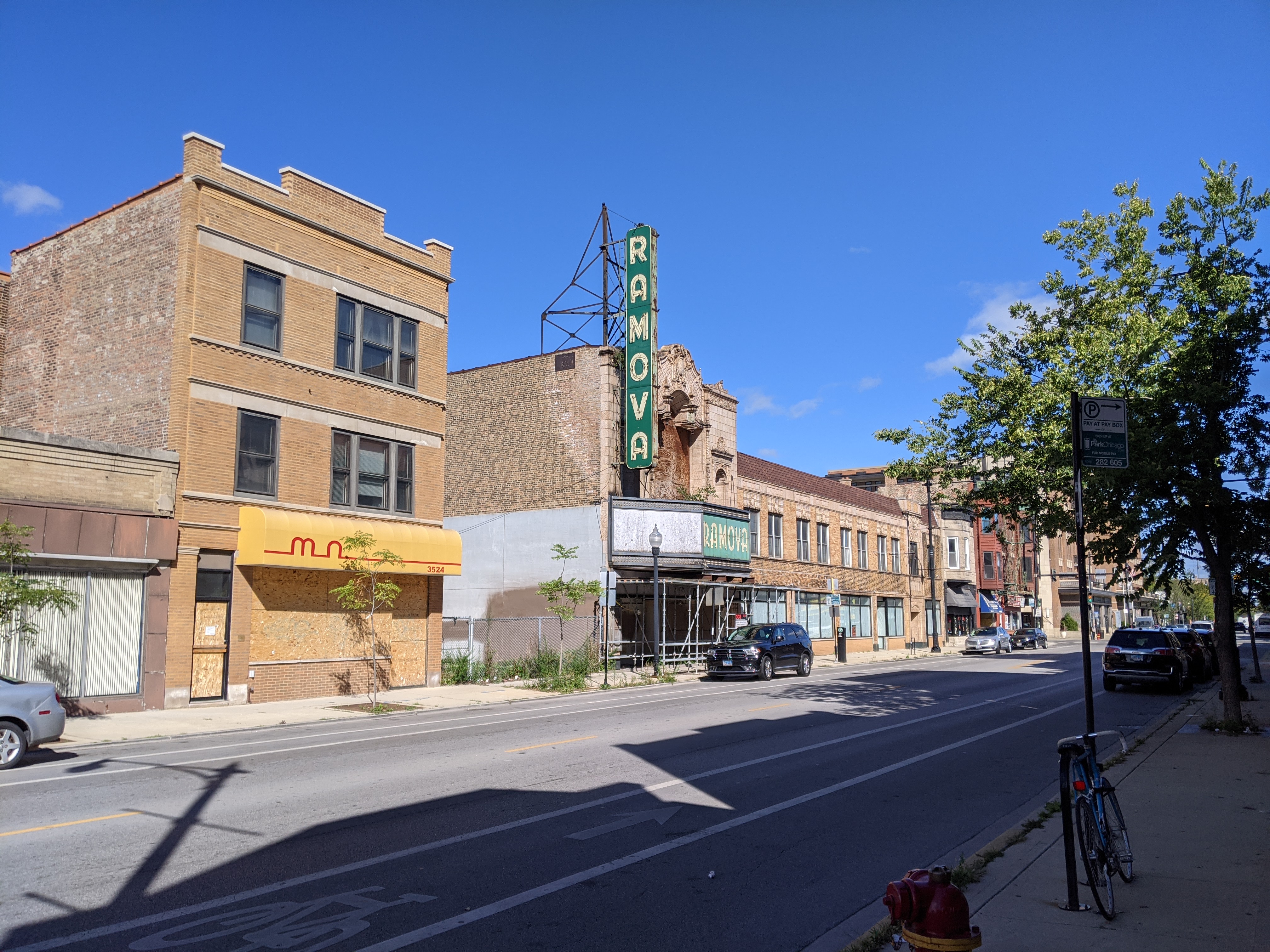
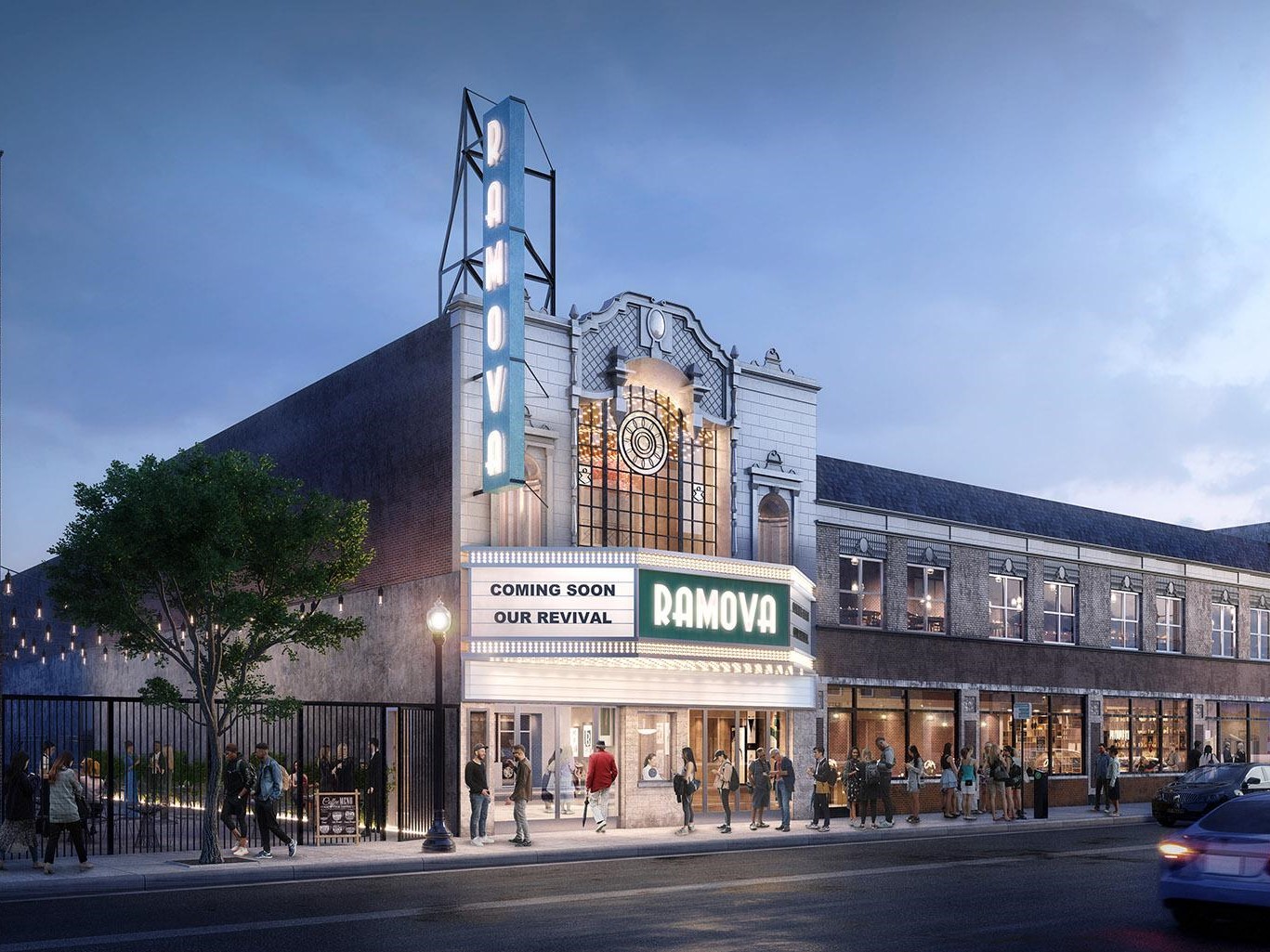
Moving just up the street, we come to the old Ramova theater. Opening in 1929 as a sister to the Music Box theater (located in modern day Lake View)8, the Ramova used to seat 1500 people in a formation alike to a Spanish courtyard. The highlight of the theater’s life came in 1940 when Charlie Chaplin’s ‘The Great Dictator’ premiered at the theater after it was seen as too controversial for downtown theaters9. The theater was demoted to a second run house in the 1950’s and closed in April 1985, but that’s not then end of its story. Recently, nostalgic locals have been trying to revive the theater, and last year Kevin Hickey with O'Reilly Office LLC got onboard and are planning to restore the theater to a new glory. The funding is partially being provided by the state of Illinois and when it opens it could offer over 100 showings a year8. While the theater currently looks abandoned, this kind of project will hopefully as a neighborhood catalyst, and should breath some life in to the many empty parcels of land along Halsted south of 35th.

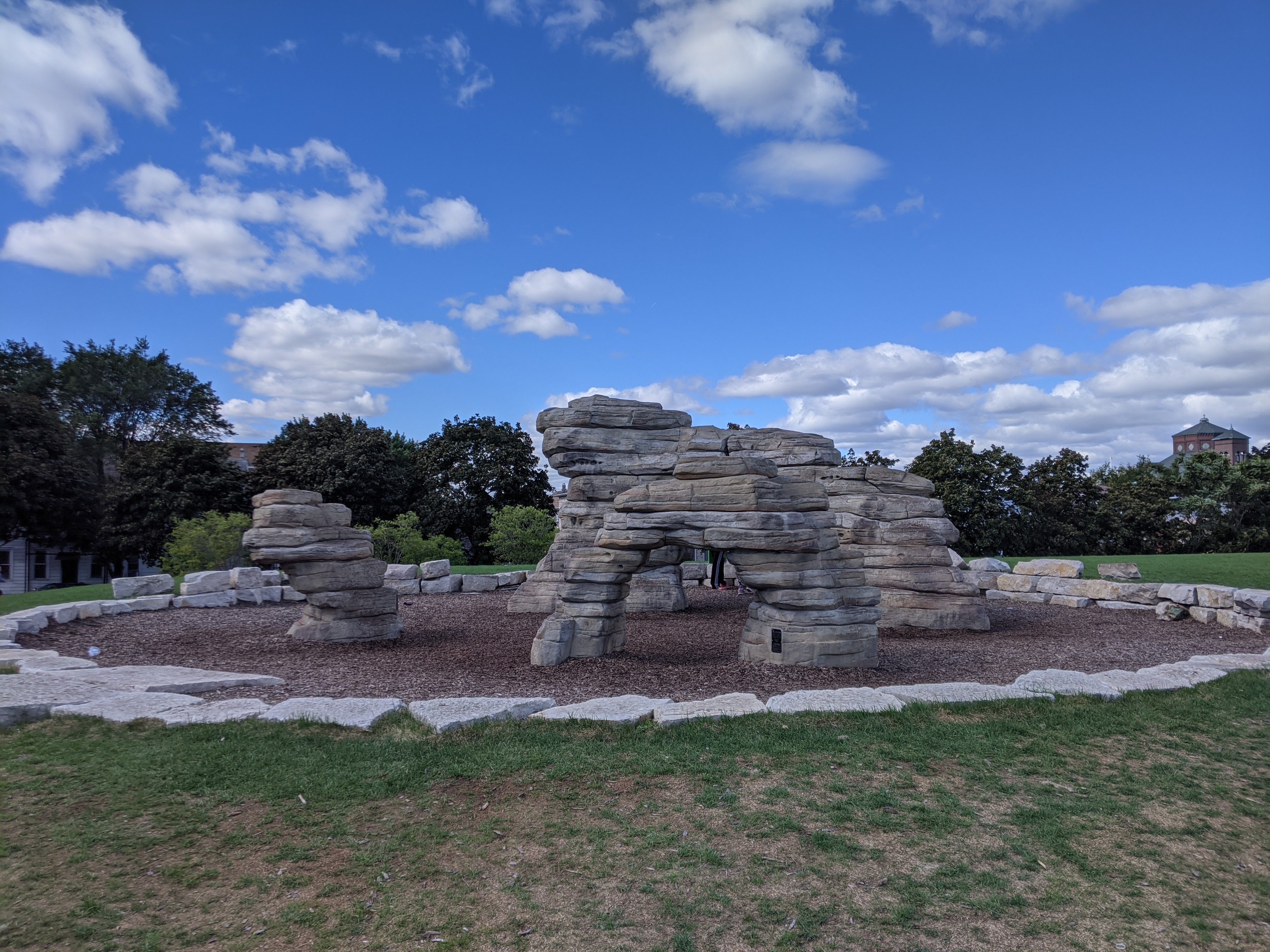
As we continued north on Halstead, we came to the MuGuane and Palmisano parks. The first of these host various leisure facilities, but the second has far more history. Located between 27th and 29th streets in the oldest part of Bridgeport is Henry C. Palmisano Nature Park, or what it was originally known as – Stearns Quarry10,11. The Quarry was opened in 1836 (not long after the City of Chicago’s founding in 1833) by the Illinois Stone & Lime Company. Quickly taken over by Marcus Cicero Stearns, the quarry provided Limestone for the nearby Illinois & Michigan canal. The quarry continued to operate until 1970, and was over 380ft deep by the time the quarry closed. The pit was then backfilled with construction waste from 1970 onwards until 1999 when it was decided to convert it into the nature park still seen today12. The park now consists of a fishing pond, a mound, natural wetlands, a multipurpose field and 27 acres of greenspace overall, as well as sculptures nodding tribute to the quarry that once was, and a fountain on the Halsted entrance. I feel that this park adds much needed public green space to the neighborhood and makes a nice place to go out for walks. I particularly liked the way the quarry walls were integrated into the park, to create a feeling of enclosure but also visual interest.
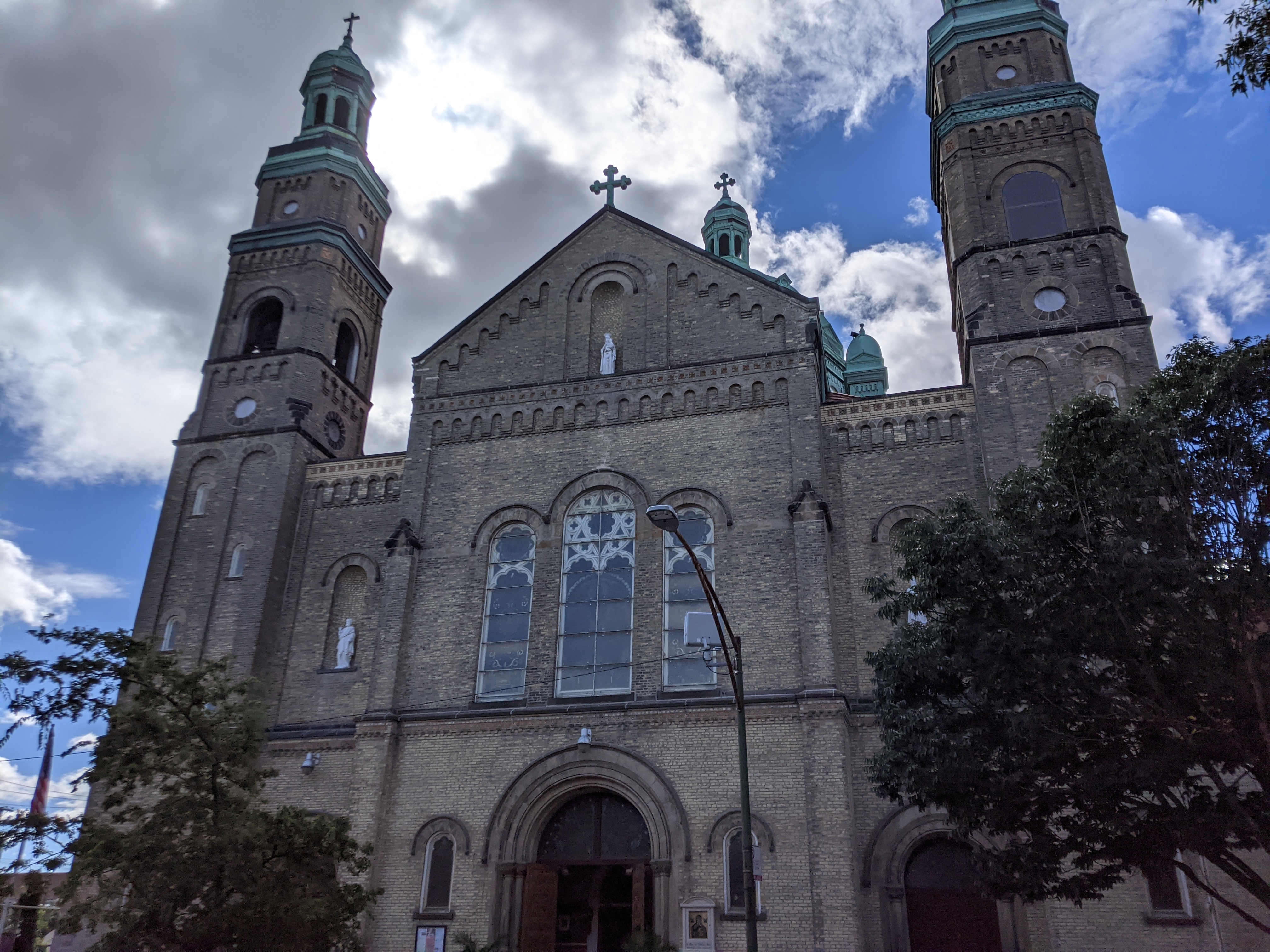
Next, we come to the Monastery of the Holy Cross. Formally the Immaculate Conception Church, it is now one of the few urban Monasteries left in the United States. It was built in 1905 as a rectory designed to look like a French chateau and bought out in 1991 after the closing of many parishes left the church empty13. The church was renovated, texts translated, and is now home to the Catholic Monastery of the Holy Cross.
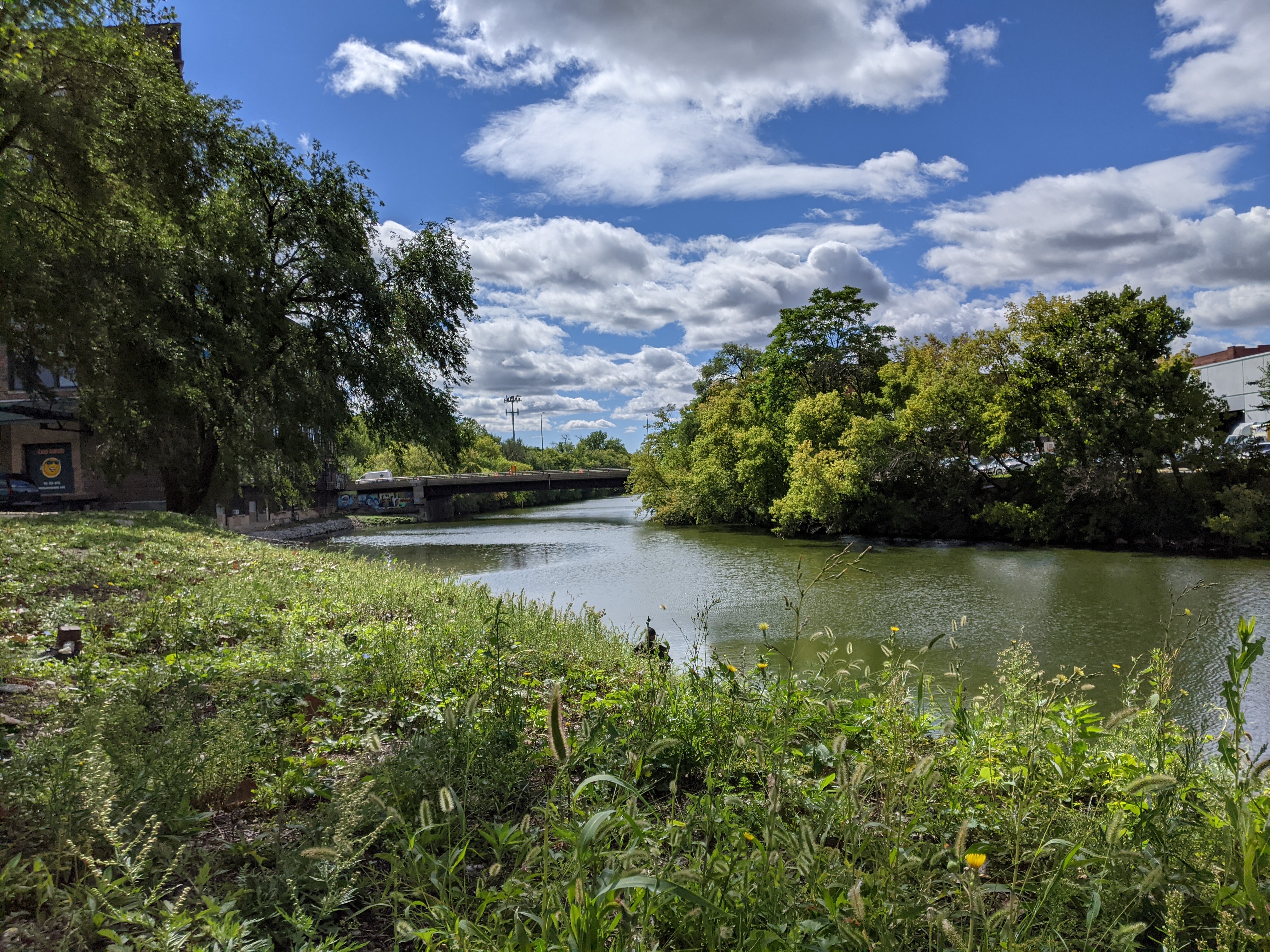
From the Monastery, we walked through the streets of Bridgeport’s more wealthy inhabitants towards Bubbly Creek. Bubbly Creek is famous for the fact that during a hot summers’ day, bubbles rise to the surface. These are bubbles of hydrogen sulfide and methane and are produced from the decay of rotting meat14. This meat is the organs and blood of animals, originally produced by the nearby Union Stockyards one located just south in Back of the Yards where Chicago’s meatpacking industry was once based. The dumping of the waste in the river produced the gas, and at one point it was so bad that lard built up on the surface of the river14. To this day the City of Chicago is invested in trying to clean the area up, with attempts to oxygenate the water to reduce the bubbling and the army corps of engineers drafted in to build a marshland area in this part of the city, but as of June, 2020, is yet to receive funding15. Wildlife is coming back to the area slowly and improvements have been made - I noticed while I was there that the bubbles or smells are no longer as present as they were previously, and locals were now fishing in the river, suggesting work done so far to improve the waterway has made progress.
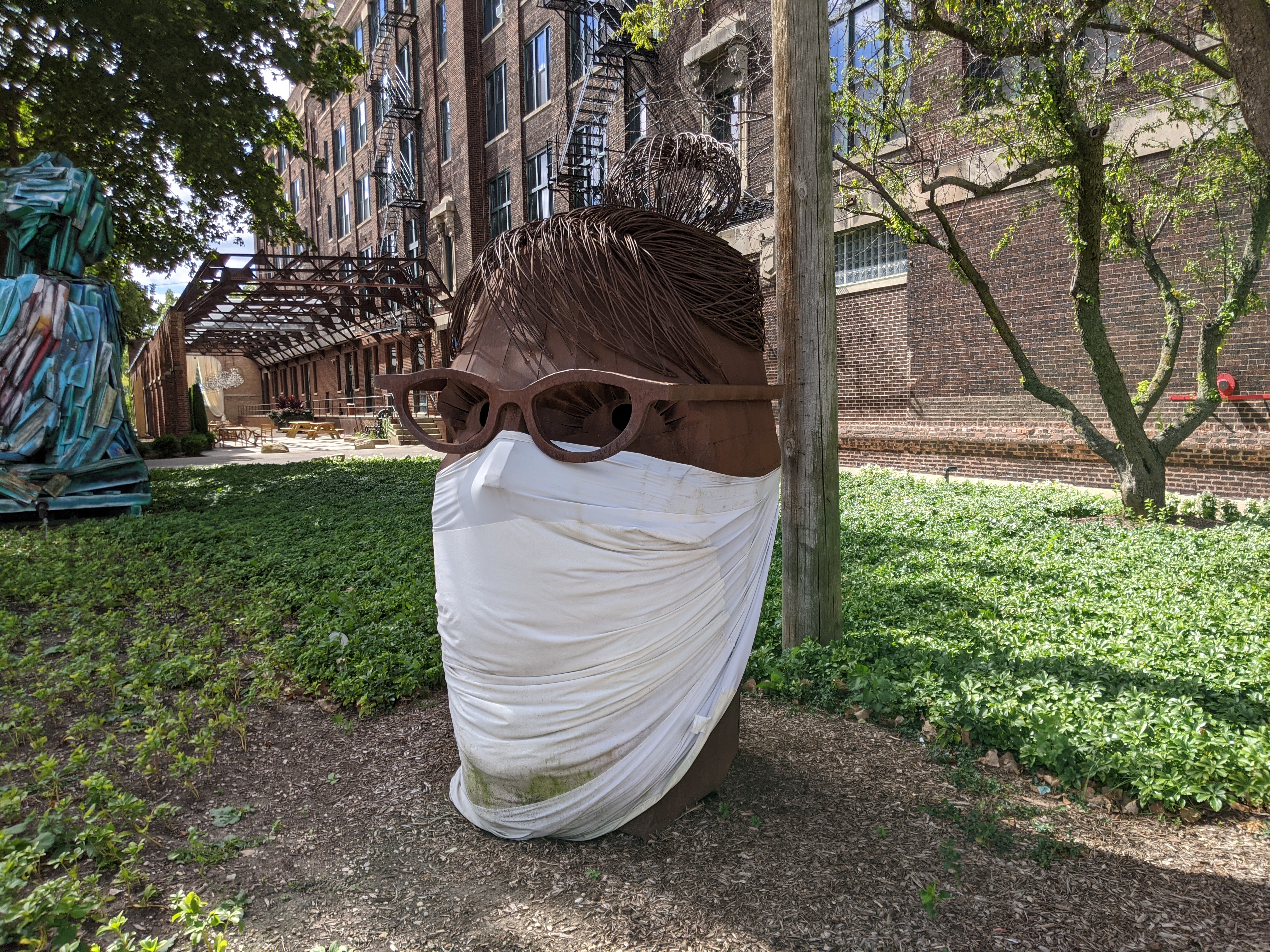
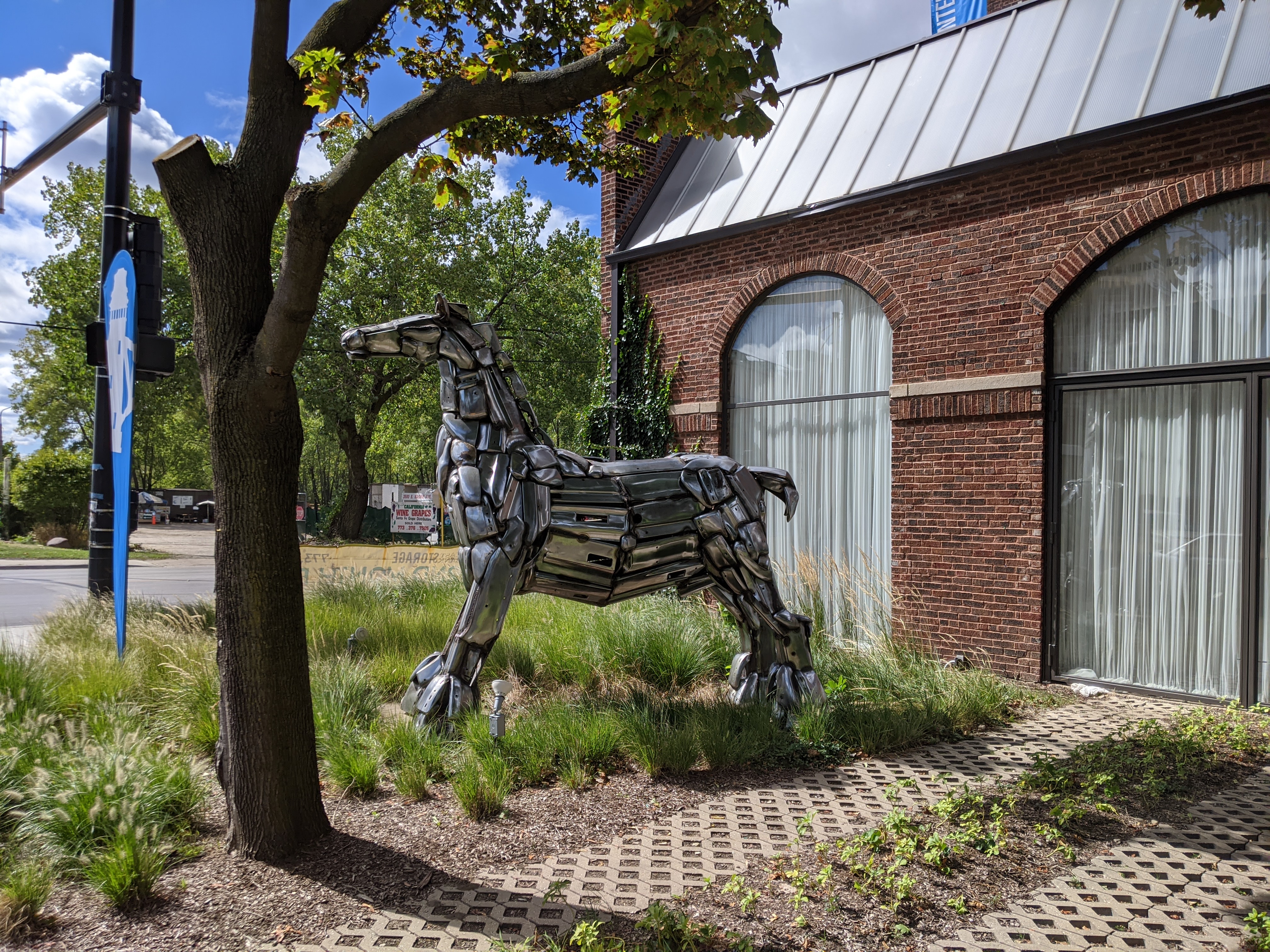
The last place we visited on our trip around Bridgeport Art Center. The Art Center, located in the historic 1911 Building, was restored to make the factory into an arts center. It has galleries on the 3rd and 4th floor, and acts as a hub for creative types including artists, designers and working professionals16. Outside in the sculpture garden are sculptures of all types, including a bird sitting on steel beams, a head, which, in the spirit of coronavirus America, is wearing a mask, someone meditating built out of pallets and a wireframe acrobat posing on a beam. There is also a horse made from polished car components looking over 35th- this one was my favorite as I thought it was particularly creative - it brings a new meaning to horsepower! The art center overlooks Bubbly Creek, and neighboring McKinley Park, so this is where our tour ended.
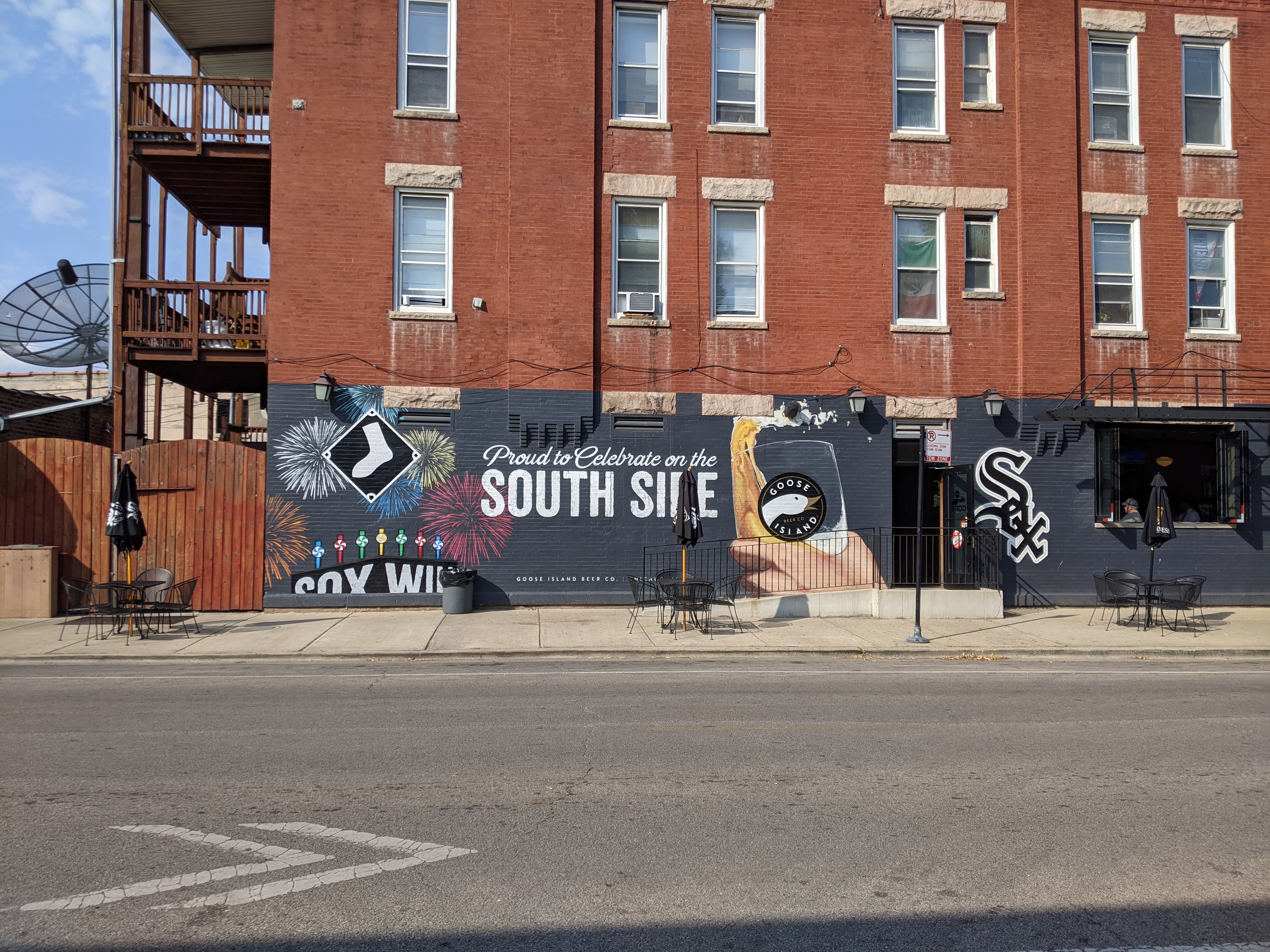
Overall, I feel that Bridgeport though once majority Irish and with significant visible Irish presence today, is a neighborhood that has diversified and now embraces all the cultures that lay within its borders. It’s a neighborhood where all 4 of Chicago’s major ethnic groups are present, and as a result is the crossroads of many of Chicago’s different cultures. It is also an incredibly open, family friendly neighborhood, and has built up a reputation of being a suburban neighborhood in the Loops back yard, and is continually growing to take advantage of its location and heritage.